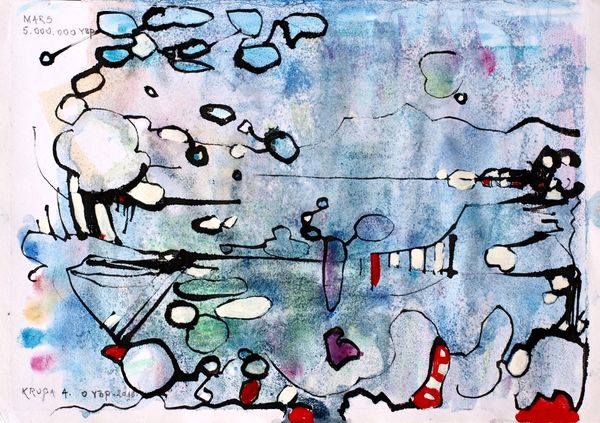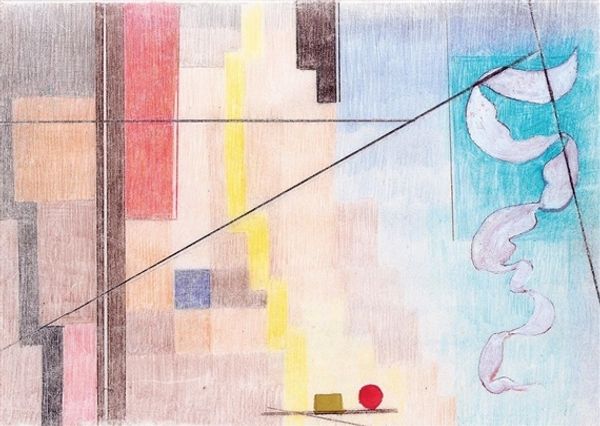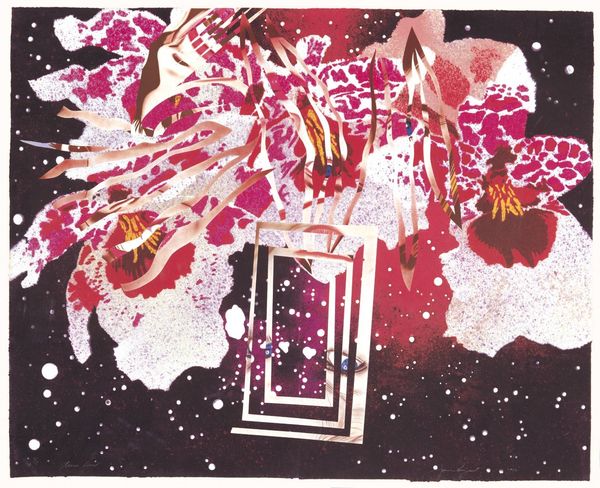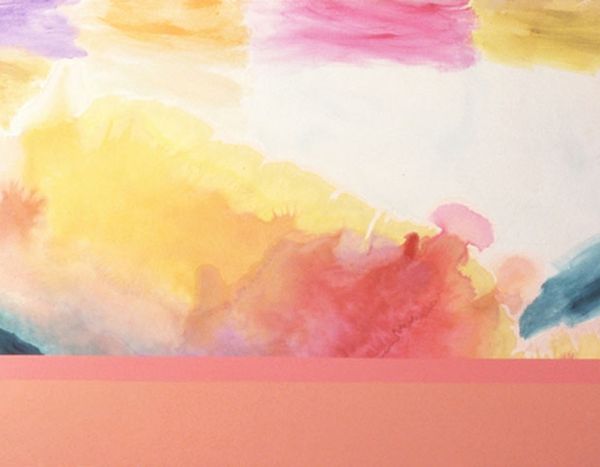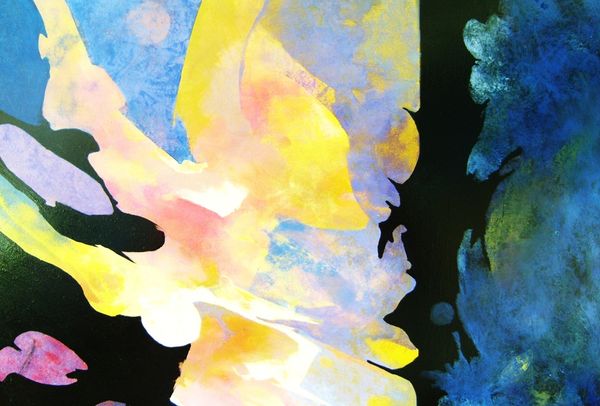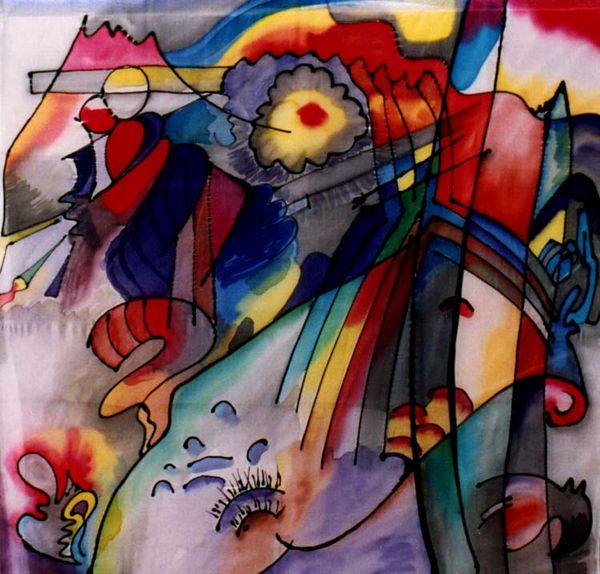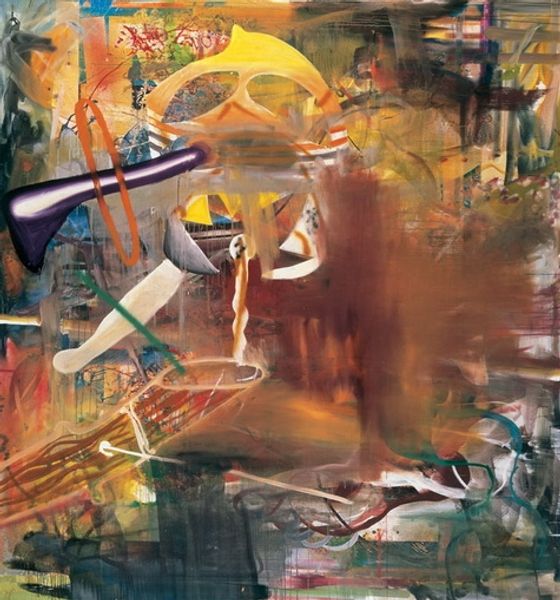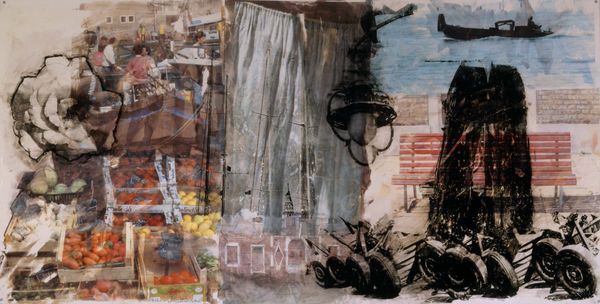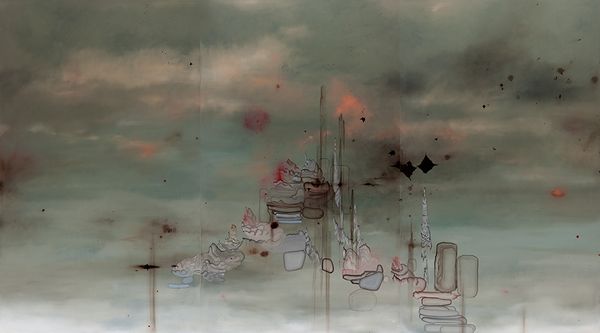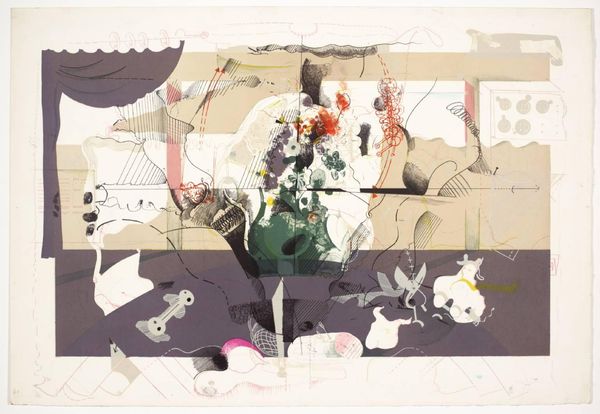
Dimensions: 50 x 65 cm
Copyright: Raoul Dufy,Fair Use
Curator: Let's explore Raoul Dufy's immense mural, "Electricity," completed in 1937. It is a vibrant depiction rendered with acrylic paint, a fairly new medium for the time, especially at this scale. Editor: My initial impression is of dynamism and controlled chaos! The colors practically vibrate, but the gridded structure grounds the swirling energy above. How did acrylic allow him to achieve this particular feel? Curator: Well, Dufy took to acrylics for their quick-drying nature, allowing him to build layers rapidly and retain a certain spontaneity. Commissioned for the Palais de la Lumière at the 1937 International Exposition in Paris, the work was meant to celebrate France's electrical industry, its innovative technology, and its historical underpinnings. Editor: The scale alone speaks volumes, thinking about the labor of applying these colors layer upon layer—it gives me pause. And is that... are those ancient gods looming above industrial machinery? How are those visual languages working together? Curator: Precisely! Dufy constructs a narrative blending historical and allegorical figures with representations of modern machinery and cityscape elements. It's a potent mixture aimed to uplift electricity to this mythological height, presenting it as the driving force of civilization's progress. The manufacturing of the product alongside depictions of the discovery. Editor: There's something so inherently optimistic, even utopian, about the piece. But seen today, knowing the ecological footprint of electricity production... well, it complicates the reading considerably. That industrial march of progress now carries a much heavier weight. Curator: Indeed. This work is not merely an uncritical celebration. It's a reflection of a specific moment, pregnant with both hope and, as we now recognize, potential pitfalls. It makes you think about who has access to electrical resources even today. Editor: Absolutely. Seeing those vibrant swathes of color juxtaposed with symbols of industry certainly leaves you with more questions than answers. The artwork itself consumed a lot of electricity to create, think about the electric lights in his atelier. Curator: Dufy's “Electricity” really encapsulates the complexities of technological advancement when seen in the social, political, and historical context, forcing us to reflect on our present-day relationship with progress. Editor: And from a material perspective, understanding the scale of this production forces us to ask even bigger questions. Definitely leaves one thinking about labor, access, and power – literally.
Comments
No comments
Be the first to comment and join the conversation on the ultimate creative platform.
